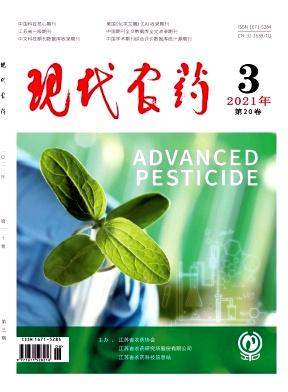Allelopathic Potential of Sweet Sorghum Root Exudates and Identification of the Relevant Allelochemicals
引用次数: 0
Abstract
This study determined the influence of cattle manure compost, chemical fertilizers, and mulch on the growth of weeds, sugar content, and growth of sweet sorghum (Sorghum bicolor (L.) Moench). The inhibitory potential of root exudates from two sweet sorghum cultivars (A; K1151 and B; K3351) was also evaluated. Chemical fertilizers increased the plant height, stem weight, biomass production, and sugar content of sweet sorghum. The total phenolic contents in the root exudates were 22.93 mg gallic acid equivalent per g dry weight (GAE/g DW) for cultivar A and 15.66 mg GAE/g DW for cultivar B. The total flavonoid contents in the root exudates were 14.77 mg rutin equivalent per g dry weight (RE/g DW) for cultivar A and 12.44 mg RE/g DW for cultivar B. The leaf extracts contained a higher amount of total phenolics and flavonoids than that of the stem and root. The inhibitory level of the root exudates from cultivar A on the seed germination and shoot growth of lettuce was greater than for cultivar B. Six phenolic acids, including protocatechuic, p-hydroxybenzoic, syringic, sinapic, p-coumaric, and benzoic acids, were detected from root exudates, root, stem, and leaf of both cultivars. The amount of p-coumaric acid in root exudates was greater than the other plant parts; however, protocatechuic acid was only found in the root exudates. p-Coumaric and protocatechuic acids may play an important role in the allelopathy of sweet sorghum to help reduce the dependence on synthetic herbicides in agricultural practice. This study indicates that cultivation methods and fertilization are important to increase both agronomic and economic values of sweet sorghum in agricultural production.甜高粱根分泌物的化感作用及相关化感物质的鉴定
本研究测定了牛粪堆肥、化肥和地膜对甜高粱(sorghum bicolor (L.))杂草生长、含糖量和生长的影响。Moench)。两种甜高粱品种根分泌物抑制电位的研究(A;K1151和B;K3351)也进行了评价。化学肥料增加了甜高粱的株高、茎重、生物量产量和含糖量。品种A和品种b根分泌物中总酚含量分别为22.93 mg没食子酸当量/g干重(GAE/g DW)和15.66 mg没食子酸当量/g DW;品种A和品种b根分泌物中总黄酮含量分别为14.77 mg芦丁当量/g DW和12.44 mg芦丁当量/g DW。品种A的根分泌物对生菜种子萌发和芽部生长的抑制水平均高于品种b。在品种A和品种b的根分泌物、根、茎和叶中检测到6种酚酸,包括原儿茶酸、对羟基苯甲酸、丁香酸、辛酸、对香豆酸和苯甲酸。根分泌物中对香豆酸含量高于植株其他部位;而原儿茶酸仅存在于根分泌物中。对香豆酸和原儿茶酸可能在甜高粱的化感作用中发挥重要作用,有助于减少农业实践中对合成除草剂的依赖。研究表明,栽培方法和施肥对提高甜高粱在农业生产中的农艺和经济价值具有重要意义。
本文章由计算机程序翻译,如有差异,请以英文原文为准。
求助全文
约1分钟内获得全文
求助全文

 求助内容:
求助内容: 应助结果提醒方式:
应助结果提醒方式:


